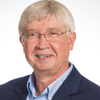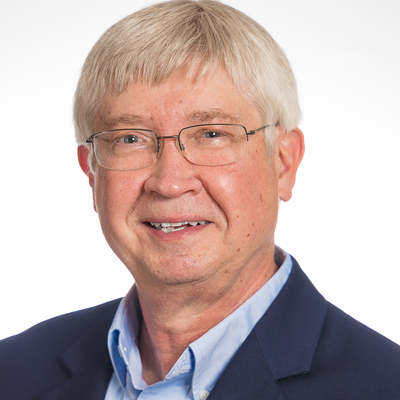Ocean debris, plastic packaging and P&G: A chat with TerraCycle
Recycling specialist helps recover plastic ocean debris for conversion into commercial PET and HDPE bottles used by the consumer brand giant for two product launches.

Mention “ocean debris” and you’ll find that most people react negatively, seeing it as a major problem, and rightfully so, yet more often than not placing the blame squarely on plastics and, by association, the entire plastics industry.
But then there are those who not only seek to find solutions to problems, but find it, including forward-thinking companies like brand owner Procter & Gamble (Cincinnati) and recycling specialists TerraCycle (Trenton, NJ) that have successfully turned ocean-, lake- and other water-borne plastic bottles and other discarded plastics into new bottles. Specifically, these are a high-density polyethylene bottle for Head & Shoulders brand shampoo and more recently a PET bottle for Fairy Ocean Plastic dish detergent made of 10% ocean plastic and 90% post-consumer recycled plastic, according to P&G.
These breakthrough developments are the subject of a presentation by TerraCycle’s Brett Stevens.during next month's ADM Cleveland 2018 (Mar. 7-8).
What was TerraCycle’s role in these projects and how and when was the connection made with P&G?
Stevens: P&G actually approached TerraCycle with this idea in late 2016. They wanted to bring attention to the global issue of ocean plastic and create a supply chain to use some of it in their products.
TerraCycle’s role is to manage the collection and processing of the material through our networks, and become the resin supplier to P&G’s convertors. This includes a lot of consulting/day-to-day work with the technical teams in P&G’s hair care and dish care divisions.
 What’s your personal involvement?
What’s your personal involvement?
Stevens: As the Global VP of Material Sales & Procurement, my role is to oversee all of our processing work and the sale of our recycled material globally. Given the custom nature of this project and the high-stakes/high-exposure initiative, I project-managed this one directly with the help of my teams in the US and Europe. This includes piecing together the supply chain, negotiating contracts, setting instructions, and working with our partners to execute.
What’s the status for these projects? Were any Best Practices learned from one that could be applied to the other?
Stevens: The Hair Care (HDPE) project is ongoing, so we are producing batches of these pellets for P&G as ordered for different activations around the world. We started the R&D work on this project in late 2016, for reference, with the first commercial run taking place in the early Spring of 2017 and bottles hitting shelves in France in the Summer of 2017.
The Dish Care (PET) project was first discussed in Spring 2017, with the first commercial run taking place in late 2017 and bottles hitting shelves in the UK in the Summer of 2018. So while the projects are separated by quite a bit of months, they’re tied together in a lot of respects because the source of our material is the same – legitimate beaches, oceans, rivers, lakes, etc. – and we have to manage this along a global supply chain.
We’ve definitely been able to apply learnings from the HDPE project to the PET project, though the materials are significantly different and require much different technical expertise.
What did these projects involve?
Stevens: TerraCycle is a unique business where we take on a lot of work before knowing just how complex or challenging it might be. This project was incredibly challenging and had lots of hurdles that we get to get through both internally and externally. At the same time, it has been the most rewarding project that I’ve ever worked on at TerraCycle and it has allowed me to grow professionally in ways that I never saw coming. I cannot give enough credit to our talented R&D group, led by Ernie Simpson. Ernie’s the main polymer scientist in our business, with over 30 years of industry experience working for J&J, DuPont, and others. Without his consulting help (both for me personally and for our processing partners), we would have never been able to pull this off. I also owe a lot of credit to our processing partners in Europe. Both Paris-based SUEZ (Paris), which handled a lot of the mechanical sorting work, and QCP (Sittard-Geleen, The Netherlands), which handled the cleaning, compounding, and pelletization work, have been incredible partners and I’m proud of the success they’ve helped us achieve.

What kind of plastics and materials are collected and from where? What type of debris is the most common?
Stevens: I’m really glad you asked this question. There’s a lot of attention around the issue of ocean plastic, and there should be – it’s a global epidemic. But it’s important to understand the difference between the material we are using in these initiatives and what else is out there on the market. 
TerraCycle is legitimately collecting rigid plastic (high-density polyethylene, polypropylene, PET and others) from beaches, oceans, rivers, lakes, and the banks of those waterways.
The key difference between these materials is that ours was already there, and that alone comes with its own set of logistical and processing challenges due to some of the degradation we’re seeing in the material.
The plastic we’re seeing is everything from beverage containers to fishing crates, discarded beach toys, and portions of formerly-whole plastic products.
Other companies are using “ocean bound” plastic, which is material from underdeveloped markets that may end up in the ocean one day due to the lack of waste management infrastructure.
We are focusing our collections on areas where TerraCycle either exists as a business, has a local warehouse, or has good “on the ground” contacts to help manage this for us. Right now, active collection areas are U.S., Canada, Mexico, Panama, Brazil, virtually all of Western Europe, the Nordics, China and Japan.
Anything else to mention?
Stevens: We’ve been fortunate to receive a lot of positive media coverage and accolades/awards as a result of this initiative. While the work we’re doing is just a drop in the bucket toward the bigger issue of ocean waste, we’re hopeful that this project brings awareness to the ongoing (and growing) challenge so that more people can get involved in the prevention effort.
For more information about the presentation, conference and 5-in-1 exhibition March 7-8 that includes Pack and PLASTEC, visit the ADM Cleveland 2018 site.
About the Author(s)
You May Also Like




